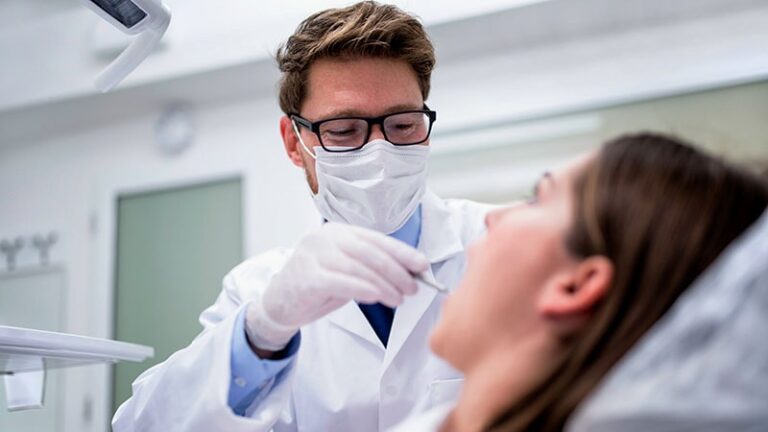TOP:
A recent study found higher incidences of bone exposure and osteoradionecrosis in head and neck cancer patients who underwent tooth extractions immediately after radiation therapy, with the risk especially elevated in those who received higher doses of radiation.
METHODOLOGY:
- Guidelines recommend removal of non-restorable teeth prior to radiotherapy to prevent osteoradionecrosis in patients with head and neck cancer, but this may delay treatment by 2–4 weeks, potentially affecting overall survival. An alternative is to perform extractions after radiation, with a caveat that radiation may affect the oral health of post-extraction patients.
- Prospective data evaluating outcomes among patients receiving extractions immediately after radiation therapy—when complications may be least likely—are lacking.
- The researchers evaluated the safety of performing dental extractions within 4 months of radiation therapy and the associated risks for bone exposure and osteoradionecrosis.
- The study included 50 head and neck cancer patients enrolled from January 2020 to September 2022.
- The primary outcome was the cumulative incidence of exposed bone. Secondary outcomes were the incidence of osteoradionecrosis and adherence to recommended post-irradiation extractions. The median follow-up period was 26 months.
TAKEAWAYS:
- A total of 30 patients had from 1 to 28 extractions at a median of 64.5 days (range, 13-152 days) after treatment, while 20 patients refused extractions. Of those who had extractions, 26 patients had extractions within the recommended time interval of 4 months after radiation therapy.
- Among all patients, 13 experienced an episode of bone exposure, 12 of which occurred in patients who had postradiation extractions. 8 of the 13 patients with exposed bone were later diagnosed with osteoradionecrosis.
- The 2-year cumulative incidences of exposed bone were 27%, 40%, and 7% among all patients, those who underwent extractions, and those who refused extractions, respectively. The 2-year cumulative incidence of osteoradionecrosis was 18%, 23%, and 7% among all patients, those who underwent extractions, and those who refused extractions, respectively.
- Among patients who received postradiation extractions, a mean oral cavity dose ≥ 35 Gy was associated with a greater risk of bone exposure at 2 years (58%) and osteoradionecrosis (39%). A mean mandibular dose ≥ 31.5 Gy produced similar results.
IN ACTION:
Post-radiation extractions, even when performed immediately after completion of radiation therapy, are “unsuitable for routine use,” particularly in high-dose oral or mandibular cases, given the risk of exposed bone and osteoradionecrosis, the authors concluded.
SOURCE:
The study, with Matthew C. Ward, MD, of the Levine Cancer Institute, Atrium Health, Charlotte, North Carolina, was are published online in JAMA Otolaryngology – Head & Neck Surgery.
LIMITATIONS:
The study had a small sample size, limited generalizability and short follow-up. Confounding factors could have affected the results.
DISCLOSURES:
The source of funding for the study was not disclosed. Several authors received grants and personal fees outside of this project.


